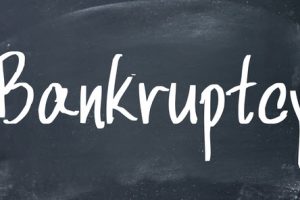Bankruptcy Filings Increase

After several consecutive years of steady decline, consumer bankruptcy filings increased 6 percent in 2016.
According to a report, Illinois had the second-highest number of new bankruptcy filings in the country for December 2016. Alabama and Tennessee had the highest per capita filing rates, continuing a trend of more bankruptcies in the South than almost any other region. Despite the recent increase, filing volume is still at about half its Great Recession peak.
Filing volume also peaked around 2005, the year that major bankruptcy reforms went into effect.
Mandatory Bankruptcy Procedures
Whether consumers file Chapter 7 or Chapter 13 bankruptcy, they must complete a debt counselling course prior to filing. Once they file, the automatic stay lasts for the duration of the case if the debtor has no prior at-fault dismissals. The stay lasts for 30 days if the debtor has one such dismissal in the last year and it is not automatic if the debtor has more than one such dismissal in the past year; in either case, judges routinely extend the automatic stay if the debtor demonstrates good faith. The automatic stay is a critical part of the Bankruptcy Code, because it prevents moneylenders from taking any adverse action against debtors, such as lawsuits or foreclosure proceedings, while the case is pending.
Also, in both bankruptcies, there is a meeting with the trustee (person who oversees the case on the judge’s behalf) about six weeks after filing. Debtors have a legal obligation to cooperate with the trustee, and that includes providing all requested documents. At a minimum, debtors must have a valid drivers’ license, Social Security card, and their most recent Federal and State returns. Depending on the jurisdiction, trustees normally request additional documents as well, such as insurance policy declaration pages, certain bank records, and title information.
Chapter 7 Procedure
Even though most debtors get to keep almost all their assets, Chapter 7 bankruptcies are often called “liquidation” bankruptcies. In many cases, debtors can keep their nonexempt assets as well, typically because they either have high unpaid secured loan balances or they do not have enough pure monetary value to legally justify their seizure and sale.
At the 341 meeting, the trustee essentially reviews the debtor’s paperwork, confirms the debtor’s identity, and asks a few simple questions. Most Chapter 7s end about four to six months later with the discharge of all the debtor’s unsecured debts, including credit cards, medical bills, payday loans, and so on.
Chapter 13 Procedure
If a consumer opts for the “wage earner” repayment plan, the trustee reviews income and expense figures before placing the consumer on an allowance. The allowance is based on the repayment plan, which is a joint effort between the trustee and the debtor; moneylenders can only object to the repayment plan under rare circumstances.
The protected repayment period lasts up to five years, giving the debtor as many as 60 months to catch up on past-due mortgage payments, vehicle loans, and other secured debts. At the end of the repayment period, these accounts show a zero past-due balance and any remaining unpaid debts are discharged.
Reach Out to Experienced Lawyers
Consumers have several options to deal with unpaid debts in bankruptcy. For a free consultation with an experienced bankruptcy lawyer in Chicago, contact the Bentz Holguin Law Firm, LLC. After hours appointments are available.
Resource:
dsnews.com/daily-dose/01-11-2017/bankruptcy-filings-finish-2016-upward-turn


